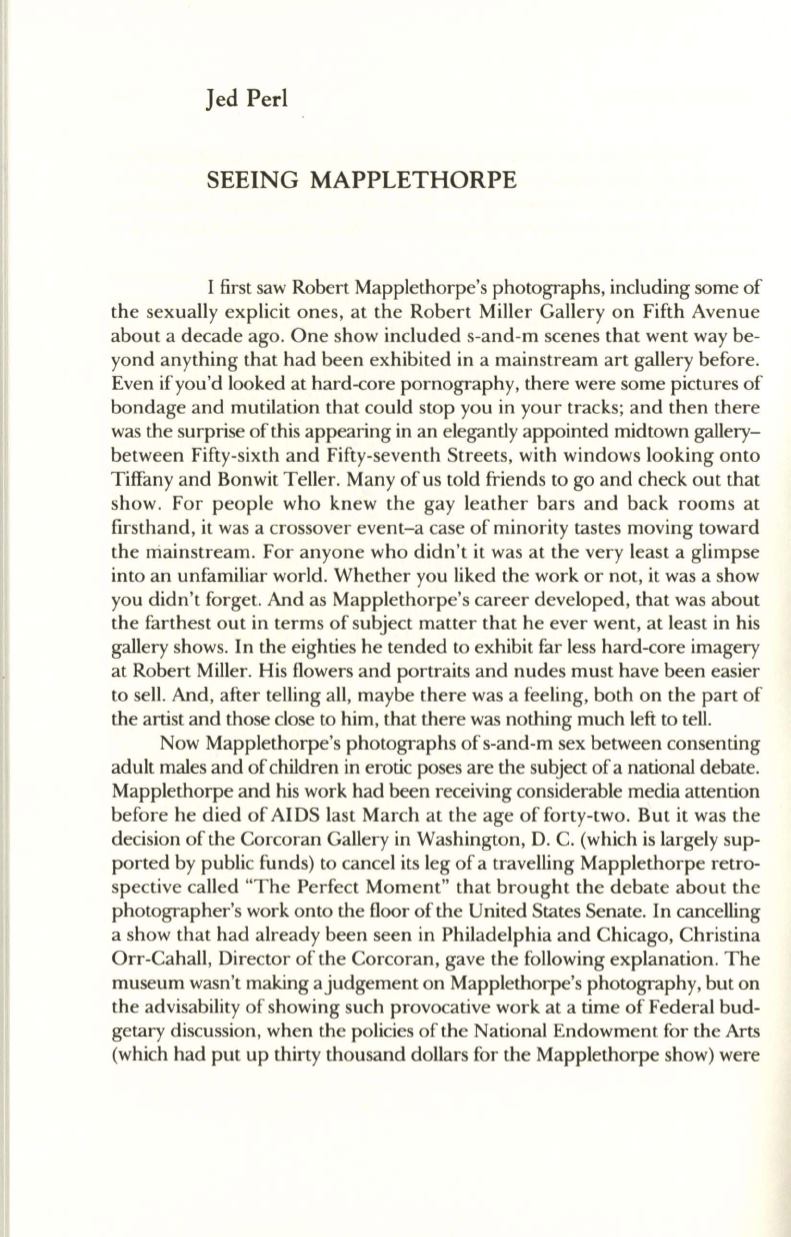
Jed Perl
SEEING MAPPLETHORPE
I first saw Robert Mapplethorpe's photographs, including some of
the sexually explicit ones, at the Robert Miller Gallery on Fifth Avenue
about a decade ago. One show included s-and-m scenes that went way be–
yond anything that had been exhibited in a mainstream art gallery before.
Even if you'd looked at hard-core pornography, there were some pictures of
bondage and mutilation that could stop you in your tracks; and then there
was the surprise of this appearing in an elegantly appointed midtown gaIlery–
between Fifty-sixth and Fifty-seventh Streets, with windows looking onto
Tiffany and Bonwit Teller. Many of us told friends to go and check out that
show. For people who knew the gay leather bars and back rooms at
firsthand, it was a crossover event-a case of minority tastes moving toward
the rriainstream. For anyone who didn't it was at the very least a glimpse
into an unfamiliar world. Whether you liked the work or not, it was a show
you didn't forget. And as Mapplethorpe's career developed, that was about
the farthest out in terms of subject matter that he ever went, at least in his
gallery shows. In the eighties he tended to exhibit far less hard-core imagery
at Robert Miller. His flowers and portraits and nudes must have been easier
to sell. And, after telling all, maybe there was a feeling, both on the part of
the artist and those close to him, that there was nothing much left to tell.
Now Mapplethorpe's photographs of s-and-m sex between consenting
adult males and ofchildren in erotic poses are the subject of a national debate.
Mapplethorpe and his work had been receiving considerable media attention
before he died of AIDS last March at the age of forty-two. But it was the
decision of the Corcoran Gallery in Washington, D. C. (which is largely sup–
ported by public funds) to cancel its leg of a travelling Mapplethorpe retro–
spective called "The Perfect Moment" that brought the debate about the
photographer's work onto the floor of the United States Senate. In cancelling
a show that had already been seen in Philadelphia and Chicago, Christina
Orr-Cahall, Director of the Corcoran, gave the following explanation. The
museum wasn't making a judgement on Mapplethorpe's photography, but on
the advisability of showing such provocative work at a time of Federal bud–
getary discussion, when the policies of the National Endowment for the Arts
(which had put up thirty thousand dollars for the Mapplethorpe show) were


